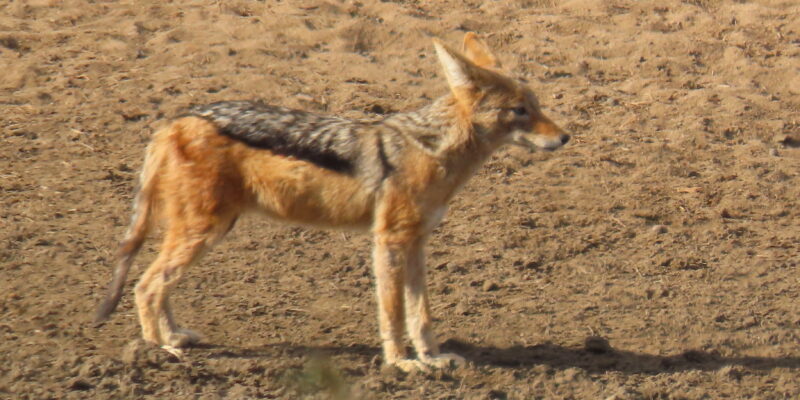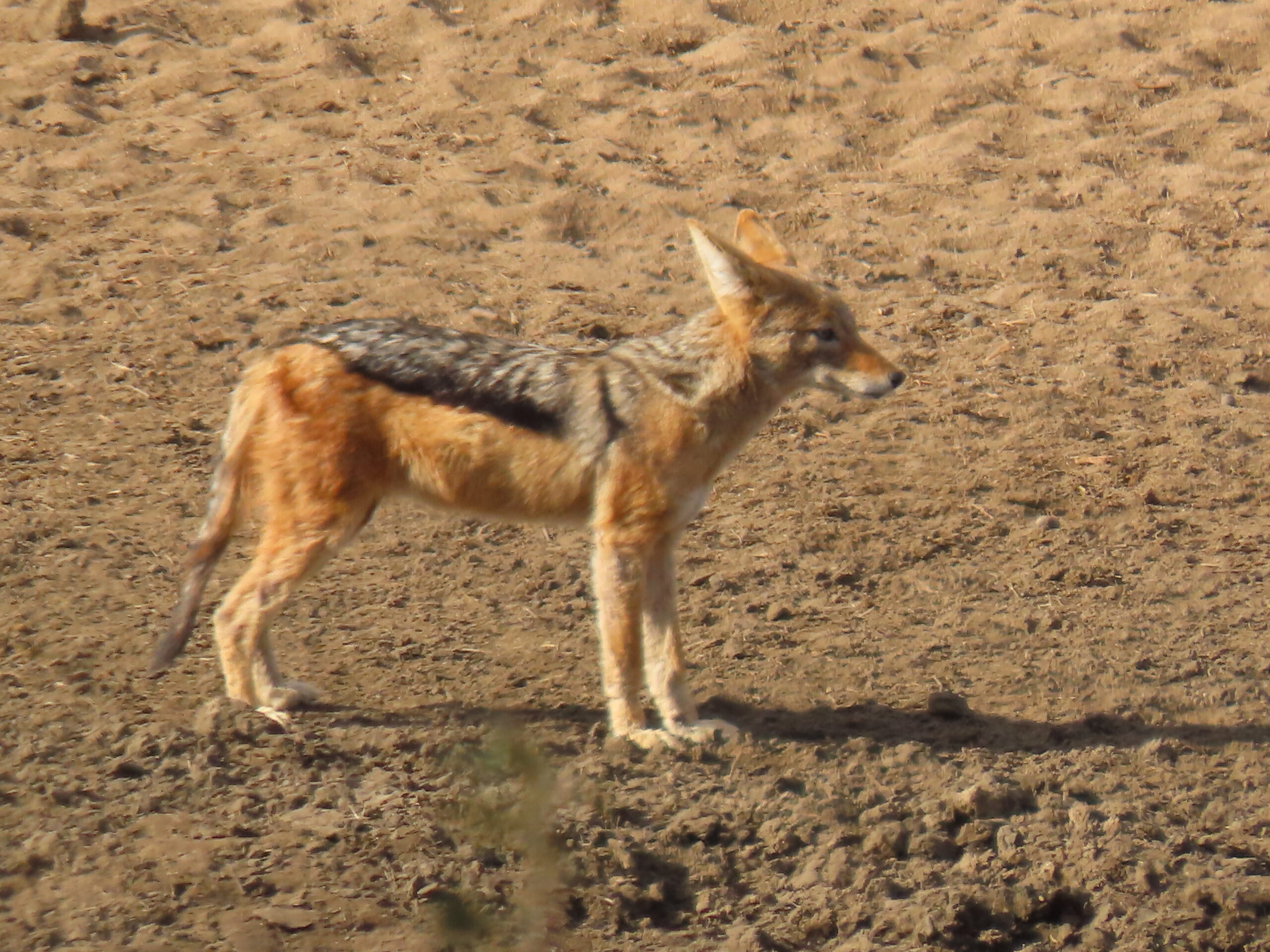
Jackals in Kruger National Park: The Clever Canids of the Savanna
In the vast expanse of Kruger National Park, South Africa’s premier wildlife sanctuary, jackals may not be as imposing as lions or as majestic as elephants. Still, they are among the most fascinating and adaptable creatures in the park. With their sharp wits, resourcefulness, and eerie calls that echo through the bush at dusk, jackals play a vital role in Kruger’s ecosystem.
There are two species of jackals found in Kruger: the black-backed jackal (Canis mesomelas) and the side-striped jackal (Canis adustus). Both are members of the dog family and are known for their cunning nature, often likened to foxes or coyotes in behavior and appearance. The black-backed jackal is the more common of the two and is easily recognized by the dark saddle of fur running down its back, which contrasts sharply with its rusty-colored body. The side-striped jackal, less frequently seen, has a grayer coat with light stripes running along its flanks.
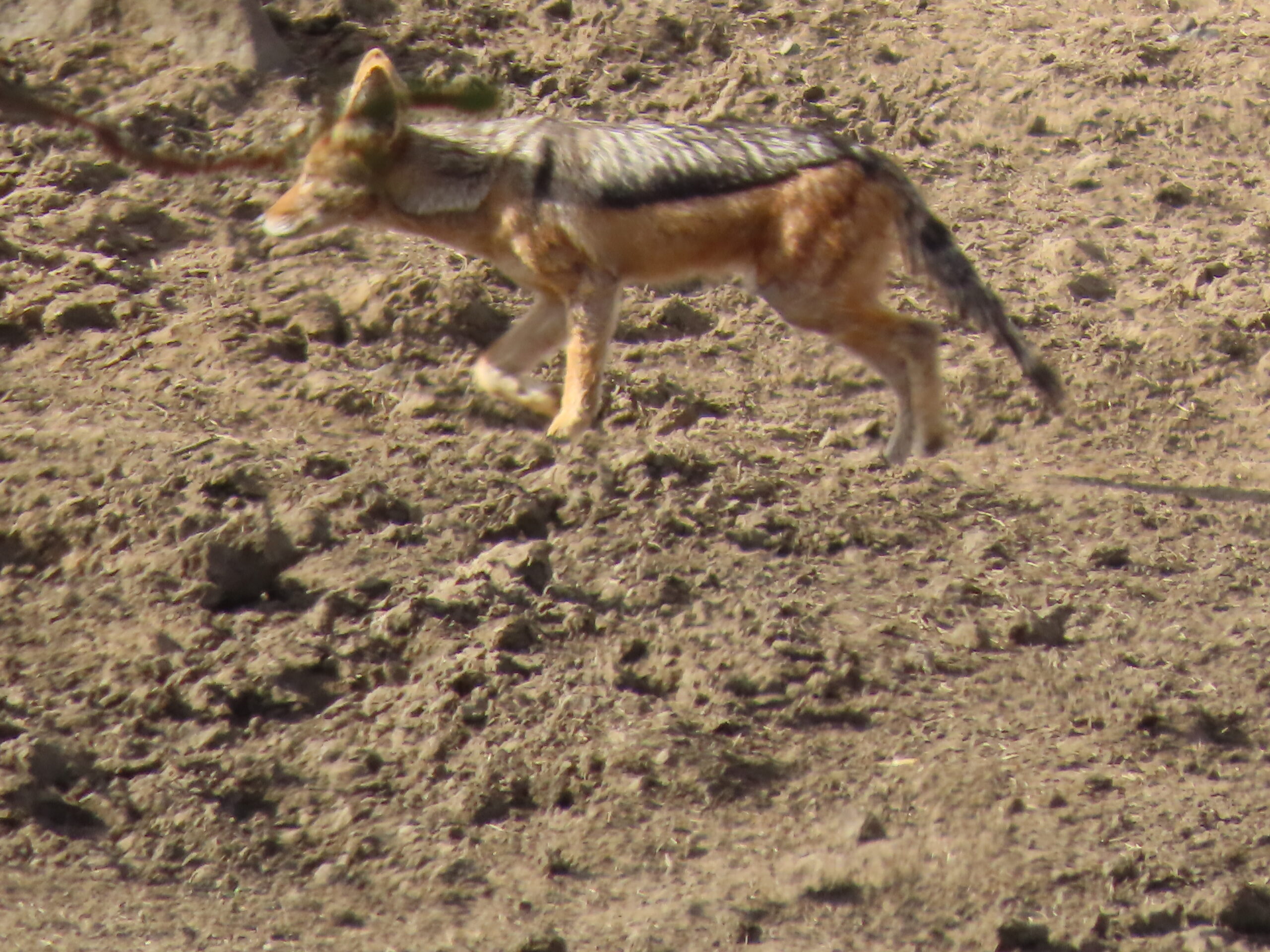
Black-backed jackals are highly visible in open savanna areas, particularly during early morning and late afternoon. They are vocal animals, often heard before they are seen. Their haunting, high-pitched howls and yelps serve as a form of communication with family members and a warning to rival jackals. Visitors to Kruger often hear their calls at night, part of the park’s wild, nocturnal soundscape.
Jackals are opportunistic omnivores, which means they will eat almost anything available. Their diet includes insects, rodents, birds, reptiles, fruit, and even the leftovers from predator kills. They are excellent scavengers and are often seen trailing behind larger carnivores, such as lions and hyenas, in hopes of snatching scraps. Despite this, jackals are also skilled hunters in their own right and can take down small antelopes, especially when hunting in pairs. Their intelligence and adaptability allow them to thrive in both open plains and more wooded areas.
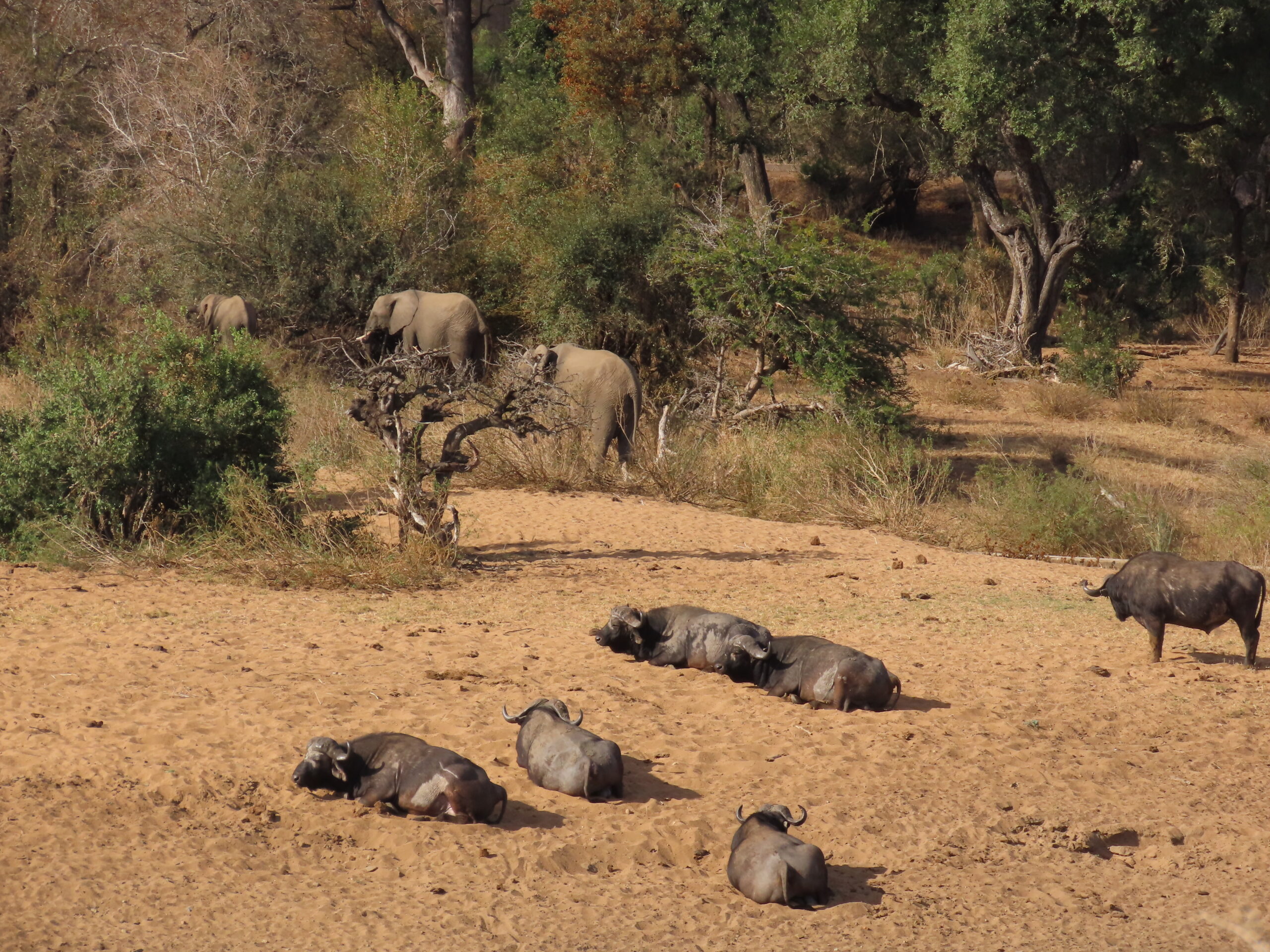
One of the more fascinating behaviors of jackals is their monogamous pair bonding. A male and female will form a lifelong pair and defend a shared territory. They often raise their pups together in dens, with both parents actively participating in feeding and protecting their young. In some cases, older offspring from previous litters may remain with the family to help raise the next generation, a trait more commonly associated with social species, such as wolves.
In Kruger, jackals play a significant role in maintaining the ecological balance. By scavenging carcasses, they contribute to natural sanitation and help limit the spread of disease. Their predation on rodents and insects also controls populations of potential agricultural pests.
Though jackals are abundant, they often go unnoticed by tourists, who are more interested in spotting the Big Five. However, for those who take the time to watch these intelligent creatures, jackals offer an intriguing window into the subtleties of life in the bush. Their interactions, vocalizations, and social dynamics reveal the complexities of survival in a challenging environment.
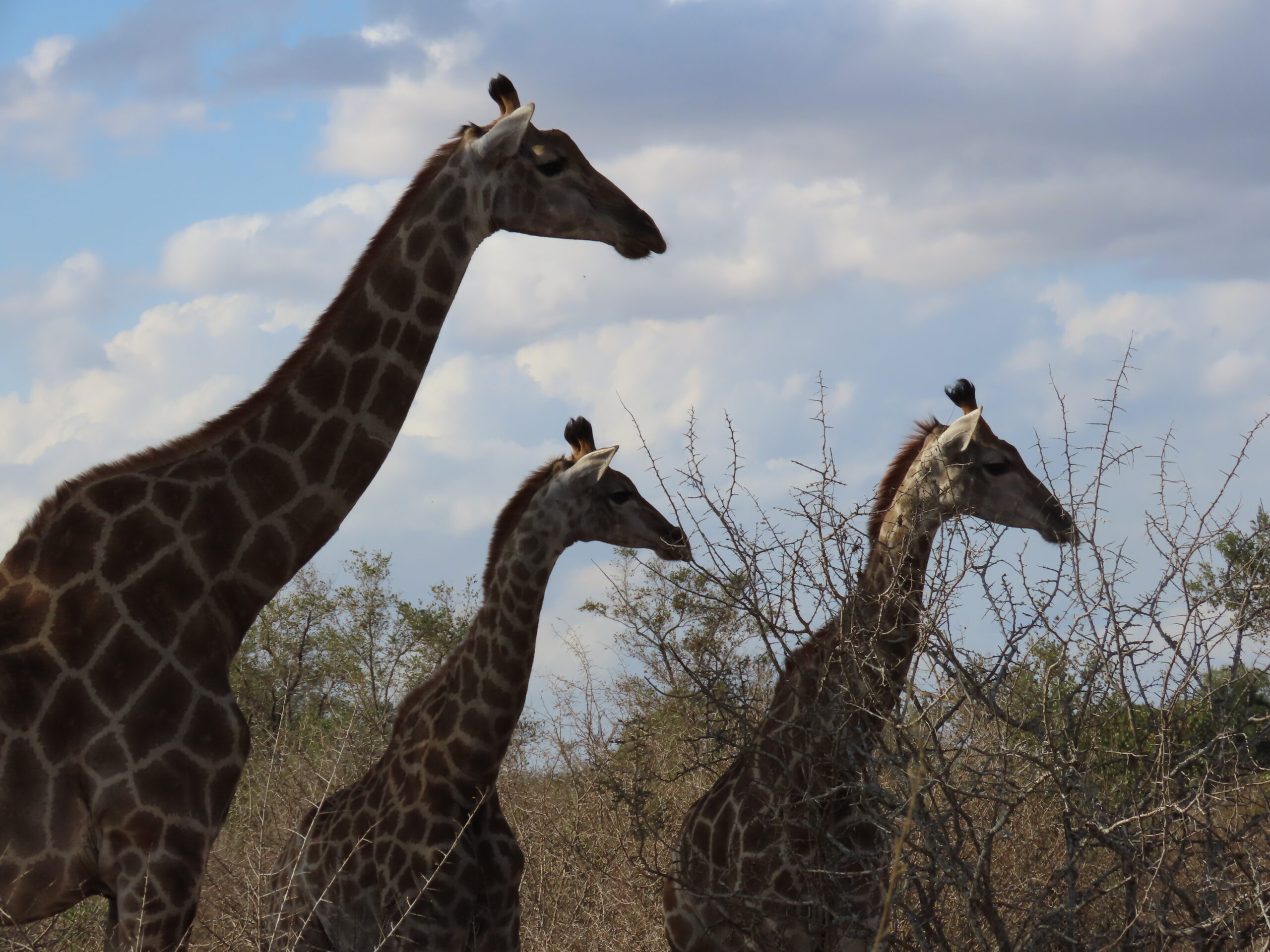
Side-striped jackals, more elusive than their black-backed cousins, prefer areas with thicker vegetation and are primarily nocturnal. They are less vocal and more solitary, rarely seen during game drives. Yet, their role in the ecosystem is just as important, and spotting one is a rare and rewarding experience for any wildlife enthusiast.
In a landscape dominated by giants, jackals remind us that intelligence, adaptability, and cooperation are equally powerful tools for survival. Observing them in Kruger is a testament to the park’s biodiversity—not just in size and spectacle, but in the subtle, everyday lives of its quieter residents.
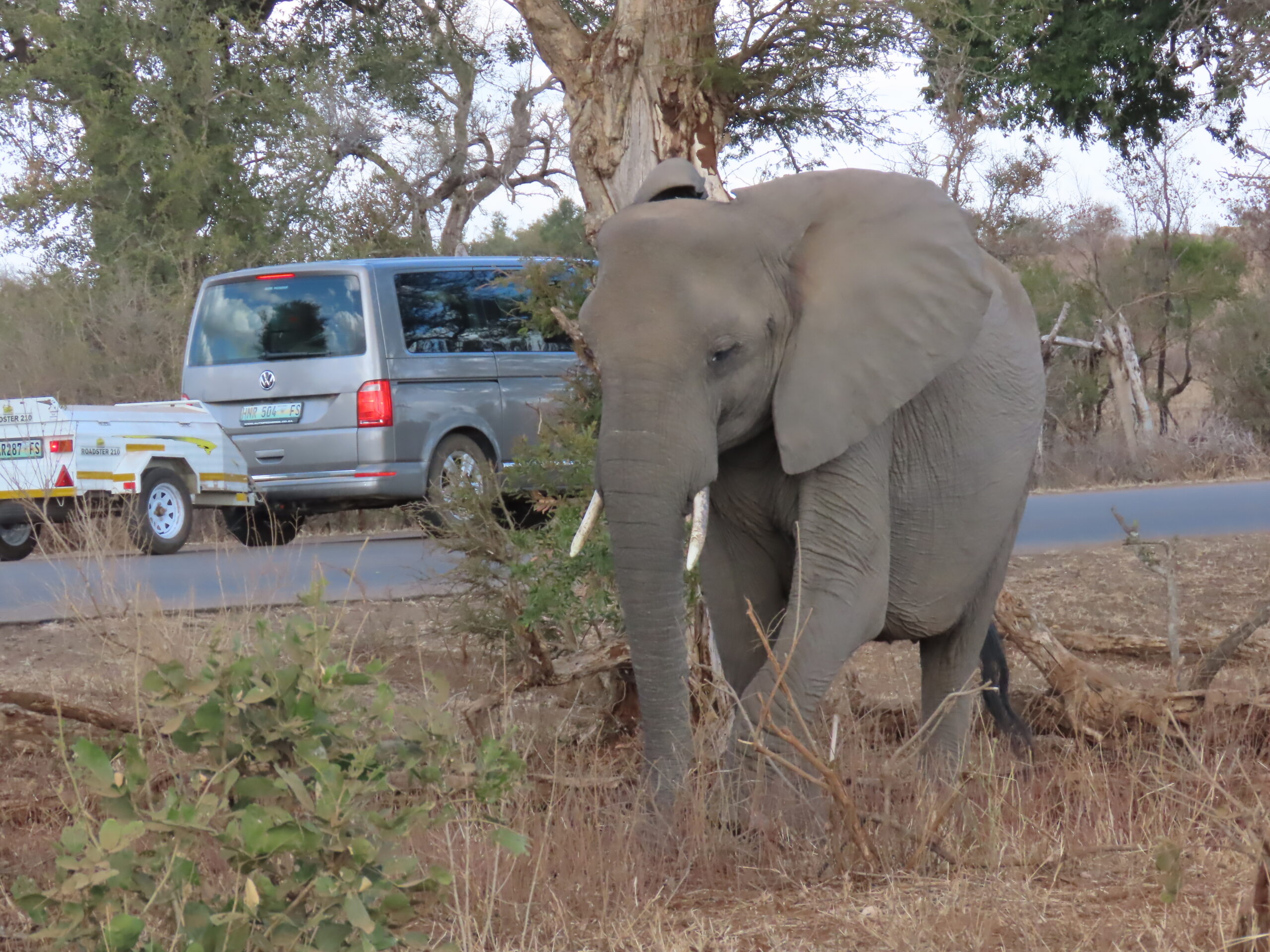
Last night, we headed to Giraffe Pub & Grill for Quiz Night, and although we didn’t win, we came in fourth place and won back the per-person entry fee of ZAR 30, equivalent to US $1.68. It was such fun to play, and we will return on our own next Tuesday, the day that Kady and Rich leave to return to the US.
Tonight, we are going to braai and stay in for the evening. They are having a great time, and it’s been delightful to share the wonders of the bush with them. We’ll be back with more tomorrow.
Be well.
Photo from ten years ago today, July 9, 2015:


